- Home
- Geoff Wolak
Wilco- Lone Wolf 1 Page 4
Wilco- Lone Wolf 1 Read online
Page 4
‘Could I ... ask a private question?’
He seemed hesitant. ‘You can try, but I might not answer.’
‘Some of the lads say ... that you only leave the SAS if you’re either killed or injured, or ... if the guy above you just don’t like you.’
I could see the sadness and anger in his eyes. ‘SAS is no different to any other unit. I started in the Queens Colour Squadron, then 2 Squadron, did well, but ... at the end of the day there’s always some cunt ... who wants to make your life hard for no reason. Here, or in the SAS, you’re dealing with people, emotional beings that make stupid decisions.
‘I had a Troop Sergeant above me, and one day he fucked up big time, but I covered it up. He was embarrassed that I had done that, but pretended to be grateful, but he never got over it, and he hated the fact that I had helped him – and that I knew about it.’
He sighed and blew out. ‘Forces is made up of people, just like some factory somewhere, and they gossip like old ladies and spite each other – especially in the SAS.’
I had noticed a pushbike in the guardroom, and at 5.30am the next morning I went and spoke to the duty staff. I found one of mine on duty, a guy called Mitchell.
‘You on at this time all week?’ I asked him.
‘Till Wednesday, why?’
‘That bike yours?’
‘Yes, why?’
‘I want an hour of valuable your sleep time, to cycle in front of me as I run, twenty quid in it for you.’
He shrugged. ‘I’m awake early anyhow, got used to it.’
‘Be here Wednesday,’ I suggested.
‘Try it now,’ the duty corporal suggested, reading a paperback. ‘No fucker around.’
And we did.
I puffed out steam, he cycled, his speedo set at nine miles per hour, and I found it a pace I could maintain. I had been running at this speed recently, so that meant a three hour marathon. I would just have to go the distance.
After one lap, he said, ‘Two point four miles.’
‘What?’
‘A lap, it’s two point four miles.’
‘Oh, right.’ I left him at the guardroom and got back to running, and I completed eight laps as usual which, if he was right, was 19 miles, Flying Officer Mason – I found out he was called - joining me for a few cold laps.
The next morning I ran nine laps, but hurt a bit at the end, my lungs burning, and my day job – that of being taught about tanks, seemed irrelevant.
That week I kept at nine laps, often running with F.O. Mason for four laps, but Bongo dragged me out Friday night into Darlington; I was his wingman. He met an ugly girl with a nice friend, and we ended up in a house somewhere, drunk, shagging our respective ladies and hearing each other at it, and bumping into each other outside the one and only toilet.
We got back midday Saturday, and I needed a microwave burger, or two. I slept for an hour, but then I found that I was wide awake, and with little to do I decided to run. It was that or listen to Bongo snoring.
It was a sunny day, warm for this time of year, and I ran ten laps, feeling good, F.O. Mason having driven past and then joined me for four laps at a good pace.
I told him about the bike, and he had one, so we booked a time for Sunday 2pm.
On Sunday he cycled at various speeds, then we swapped, then put the bike away and ran further laps, both now happy with the pace.
‘You’re a damn sight fitter than I am,’ he commented as he finished his six laps. ‘I did a marathon last year, over three hours, but I reckon you’d do well.’
‘How’d you – you know - get on a marathon?’ I puzzled.
‘Talk to Corporal Hesky, he’s a member of the local club, knows everyone. There’s the Darlington Marathon two weeks before the London Marathon, lot of soldiers in it, could try that.’
I found Cpl. Hesky the next day, but he had been expecting me.
‘Wilco, the runner,’ he stated.
‘Amateur runner,’ I corrected him. ‘I’ve not raced yet.’
‘You run at 5.30am each morning, and there’re none here that would do that, not even me. First thing you need is that keen ability, rest will fall into place.’
‘Someone mentioned this Darlington Marathon...’
‘You want a place in it?’
‘Well ... yeah, I guess.’
‘Fine, I’ll put your name down, they don’t limit numbers. Lot of soldiers, some of ours. So why you so determined?’
I puzzled that with a frown. ‘Determined?’
‘To get yourself up at that time.’
‘I don’t ... I just wake at that time and can’t get back off to sleep. I go to bed at 11pm ish, and wake at 5am all fresh.’
‘Lucky fucker,’ he let out. ‘But some people are like that. And you’re not tired in work later on?’
‘Nothing I do is taxing,’ I scoffed.
‘You’re not popular, I hear.’
‘Bollocks,’ I snapped. ‘They played practical jokes on me, I got covered in oil and the CO wanted me to pay for new uniform, so I told the CO I’d get legal counsel and he made them pay for it.’
‘Damn right, their fault, but they always do that to new guys,’ he commented. ‘And this lot are embarrassing when they have to do the BFT, bunch of fat old wankers. You trying for 2 Squadron?’
‘No, not that keen on parachuting.’
‘They only jump four times a year, rest is tanks like here,’ he scoffed. ‘They ain’t so exciting.’
I got the details of the armourer’s course, and then puzzled it, and then went and found Bongo. ‘This armourer’s course, it’s in Catterick?’
‘Yep, up the road. Mostly army, some RAF, some others. I can drive you each day.’
‘You’re down for it?’
‘No, dope, I’m helping out a few days a week, easy number. Not qualified to teach yet, but I know the instructors there.’
‘So ... I can sleep here and run each day,’ I realised.
‘You are so ... fucked in the head, you know that. What the fuck do you get out of a nice warm bed for, eh?’
‘To get away from your fucking snoring!’ I shouted.
‘Oh, right, well there is that, yes.’
‘Don’t ever get married!’ I quietly told him.
‘Not much chance of that,’ he quipped.
On the first day, Bongo introducing me to people he knew, we simply watched films about the history of gunpowder, the history of cannons – a cartoon, then a film about small thin cannons evolving into flintlocks, finally the advent of cordite and other accelerants. Most of those on the course were Army, sneering at us RAF types, and one lad was from the Navy down in Portsmouth.
We all sloped off at 4pm, and I headed to the gym. Not the official gym, the one like a school gym that no one ever used or was allowed to use, but a small corner of a hangar that had some weights, and a heater going. It was freezing, not least because of a very high metal roof.
I did not find anyone I knew of the three men training, but one looked super-fit, all muscles, apparently called Mouse. ‘Got a minute?’ I asked him when he paused his routine.
‘What’d you want?’ he asked in an unfriendly tone.
‘I wanted some advice. I’m down for a marathon in a few months, but a few people have said that I should not just run, but do other stuff.’
He wiped sweat and nodded. ‘I had a mate who ran good marathons, and he did extra stuff, not just running. He would do a few laps as a warm up, then run sideways, then do leg lunges, then run backwards, then run on his toes, stuff like that. He then worked on what they call capacity.’
‘Capacity?’ I queried.
‘Look at this way: if you run ten miles at a certain pace you get good at it, but when the time comes to run faster you crap out. So what my mate did was to run a lap to warm up, then sprint for ten seconds, rest for thirty seconds, then sprint for twenty seconds, thirty, going more and more.
‘Sometimes he’d do a slow lap, faster lap, very fast l
ap, then back down to dead slow. And that improved capacity, for when the competition came around.’
I nodded, it was all useful stuff. I pointed at a guy with big muscles. ‘And weight training?’
‘Not like that,’ he scoffed. ‘Robbo there is tough as fuck, can lift weights you’d struggle with, but he can’t run. Thing is ... body gets used to it, to what you do in training. If you push heavy weights you get good at it, and if you run you get good at running, and if you play squash or some shit ... you get good at that. Question is – what do you want to be good at?’
‘A good runner, then a good soldier.’
‘Well, soldiering is running, walking with a heavy pack, carrying a rifle or kit, getting down then getting up, so ... if you want to be good at all that you need to do all that. Funny thing the human body; take my uncle Roger. Looking at him you’d think him an unfit old wanker.
‘But one day I went to where he works, and I tried to help out, and he left me standing. He can stand with his arms above his head eight hours a day working on ceilings. Me, I lasted five minutes before I needed to put my arms down.
‘Thing is, you get used to it. He’s done it for twenty years, so he’s used to it. You and me ain’t. Trouble with training ... is that you get good at what you train at, so train at a lot of stuff. Here...’
He led me to a cabinet, and pulled out two strips of lead. ‘Hold them, run on the spot – balls of your feet like a boxer, arms up and down like running.’
I did as asked.
‘Right, now do that till it hurts, and each day, and when you run the marathon you don’t have the weights and your arms feel lighter.’
And I did, stood running on the spot for half an hour before I tried some sit-ups, pull-ups and then press-ups, returning to running on the spot.
Two hours later, he approached. ‘You don’t tire out, do you.’
‘Getting fitter these past few months,’ I said. ‘I run in the mornings.’
‘Ah, you’re that new kid. You’re a bit tall for a long distance runner, they tend to be small and light.’ It sounded familiar. But now that I had asked for the muscle-head’s advice, there was no shutting him up; he had adopted me as a pet project and younger brother all in one.
The next day we were back to movies, this time the advent of gunpowder sachets before fully metal-encased bullets, and a film about bolt action rifles before a film about ballistics, and I knew that the height of the arc was an apogee, and how bullets slowed down partly due to wind resistance and partly due to gravity – depending on the angle they were fired at.
They gave us a test, to work out how high a bullet would go if fired at 600m per second straight up, gravity slowing it down second by second, as well as wind resistance – a complex formula.
That evening I was back in the gym, running in the morning despite the rain, and back in school we watched a film about what happens when a bullet hits water, a rubber block, and when it hits a human body. I learnt about leading edge and trailing edge pressure waves, sonic booms and spin effects, a short film shown about the Vietnam War.
By the end of the first week I felt like I had learnt something new, and something practical and useful, more so than first aid, and we had spent a day stripping SLRs and GPMGs, something I had not done since basic training.
On the Monday we again stripped SLRs, but were now taught what to look for as far as wear and tear went, how to use callipers and how to measure things – looking for warping. They laid out four rifles, and we each tested them, hoping to spot what was wrong. I got three out of four right.
That session led to repairs - as far as that went, and safe storage, use of oil, effects of cold and heat, snow and sand on the weapons. All of that was repeated with the GMPG, but in much more detail, not least because more could wear down with a machinegun.
They taught me how to set-up the GPMG for the sustained-fire tripod, something I had not covered, and I fired off many rounds on the range nearby, only to then have to clean, test and measure the weapon with an instructor stood over me – which turned out to be Bongo, an easy task master.
We moved on to pistols, the Browning 9mm, and fired off many rounds before cleaning and checking them, we even had lessons on smoke canisters and trip flares. The pistols led to a lengthy film about the history of revolvers and pistols, and the various types, notes handed out. Some pistols could even be fired with the hammer forwards.
Mechanical knowledge came next.
‘A lug ... is a bit of metal that sticks out and catches something or stops something, a cam is a switch. A cam is a circle with a bit sticking out, shaped like an egg. When it rotates, three-quarters of the revolution doesn’t affect anything, one quarter does. A trigger mechanism has a cam and a lug. Pull the trigger and the cam moves a device that releases a lug holding the slide in place.
‘With an automatic rifle, holding the trigger down doesn’t cause repeated fire. It has to be released and re-set.’
He brought out a bolt action rifle that had been cut in half down the middle. ‘Put a round in here, push forward the bolt, and a lug stops the firing pin holder, but as the rest of the bolt head moves forward it pushes the round into the breach, the bolt handle locking it down, the firing pin holder held under pressure from an internal spring.
‘Pull the trigger, and the lug holding the firing pin in place is released, the pin hits the detonator cap, and the round discharges. Repeat each time to fire.’
He brought out an SLR that had been sliced in half, or made to look that way. ‘With a modern self-loading rifle, we start again at the point the round is moving down the chamber. Behind it are expanding hot gases, and when the round gets to here – towards the end of the barrel – some of that hot gas goes up a small opening and pushes against a piston, and that piston does two things.
‘It pushes the slide back and unlocks the pin holder, the important thing being that the pin holder is unlocked after the round leaves the chamber, or it would blow up in your face.
‘When the slide hits the back of the housing it compresses a spring, and so shoots forwards, picking up another round just like a bolt-action rifle, a lug stopping the firing pin. If the trigger is held down, nothing happens – thanks to that cam. You have to release and then squeeze the trigger again.
‘If you removed or modified that cam it would work like a machinegun, and some of these FN rifles can be fired that way, but they have stronger barrels.
‘Now, some assault rifles have pistons, some have just a hole for gases to blow back the slide. We’ll now discuss the relative merits.’
The L1A1 FN SLR and AK47 derivatives were piston – the AK47 piston being an integral part of the slide, the American M16 gas operated, the M16 getting more soot on the slide, but without a piston to clog up and clean.
A lack of a piston meant less to do, yet the piston operated AK47 was more reliable than the M16 gas impingement system, but the metal of the M16 was easy to keep clean. The M16 had a higher rate of spin on its discharged rounds, was more accurate – despite a lighter round, 5.56mm verses 7.62mm Russian standard, not the same as 7.62m NATO standard I learnt.
‘OK, this is an AK47, standard old Russian model, discontinued since – about 1953, don’t mix it up with the Chinese variant, different manufacturing process. This ... is a Chinese variant, you can tell by the rivets and the front sight, enclosed on the Chinese.
‘AK47 became the AK74, in 1974, or AKM – “M” for modern, and then became 5.45mm – not interchangeable with western rounds. Note, although commonly known as an AKM, it’s strictly not, because there was an AKM a few years earlier, and the AK74 came later. Differences are slight apart from the change of calibre obviously.
‘Note, AKM is 7.62mm Russian standard, AK74 is not, and you will see AK74m written down. Chinese AK47 is still 7.62mm, and is called AK56 – because it went into service in 1956.
‘If you want a reliable weapon, and a good one, get an AKML 7.62mm with a 20inch barrel, forget the SLR. The AKM
will even fire after being underwater, fucking marvellous piece of kit.
‘Now, the AK47 design was copied – legally and otherwise, by many countries, small variances in design, big fucking variances in quality. When you see an AK47 on the TV, first thing to do is to say – that’s not an AK47, since few are still around, Russian originals that is, but no fucker uses labels for AK56 or AK74 as they should.’
That led us to a film, again, about the various weapons carried by armies around the world, and NATO weapons verses Russian weapons, and what caused stoppages in rifles. Failure to load, failure to eject, double feed – or just plan shit in the slide.
Failure to load was common in the British Army due to poor quality magazines and poor handling of the magazine’s flimsy metal. Failure to eject was less common on rifles than pistols, and a double load was again down to magazines mostly. A dirty slide meant that it jammed tight, and that was serious, because it often meant the weapon was a write-off.
He then showed us a film about barrel warp, and what happens. A new recruit had fired his SLR, the recoil knocking him back, more so than normal, the red hot round stuck in the barrel. Upon firing again, the end of the barrel blew apart, and looked like something from a Bugs Bunny cartoon – when Bugs stuck his finger down a barrel before it was fired.
Barrel warp could be down to poor manufacture, old age, extreme heat or cold, or over-use, a specialist tool used to measure the inside of the barrel and test for it, which we got to try.
We then moved on to the new SA80 rifle, which I liked the look of – to start with at least.
‘This, we’re supposed to teach you about, the SA80 rifle, made in Enfield again, and soon to be in service with all units – and god help us should we go to war. This weapon ... is a piece of shit. So far, we have not found anything that works as described. Bits break off, bits dent and get scraped, the metal thin and easy to damage. Magazines fall out, chin rest falls off, it overheats and the barrel warps.

 K2 book 1
K2 book 1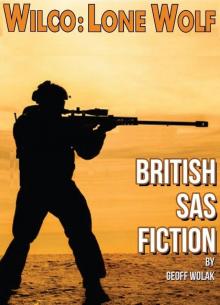 Wilco- Lone Wolf 22
Wilco- Lone Wolf 22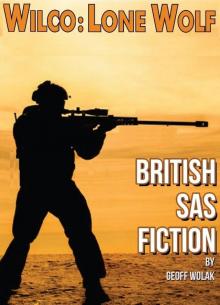 Wilco- Lone Wolf 20
Wilco- Lone Wolf 20 Wilco- Lone Wolf 8
Wilco- Lone Wolf 8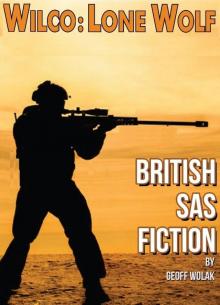 Wilco- Lone Wolf 17
Wilco- Lone Wolf 17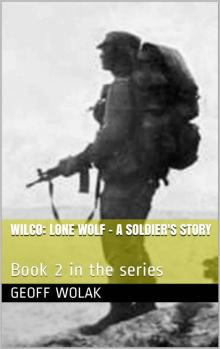 Wilco- Lone Wolf 2
Wilco- Lone Wolf 2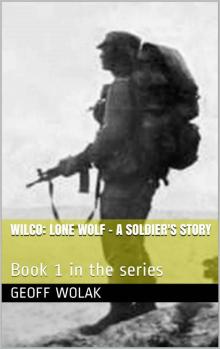 Wilco- Lone Wolf 1
Wilco- Lone Wolf 1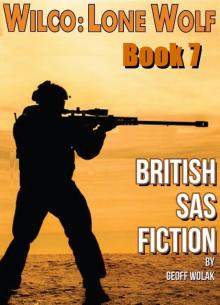 Wilco- Lone Wolf 7
Wilco- Lone Wolf 7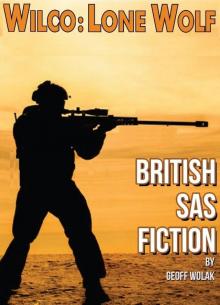 Wilco- Lone Wolf 15
Wilco- Lone Wolf 15 Wilco- Lone Wolf - Book 4
Wilco- Lone Wolf - Book 4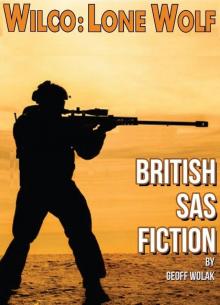 Wilco- Lone Wolf 21
Wilco- Lone Wolf 21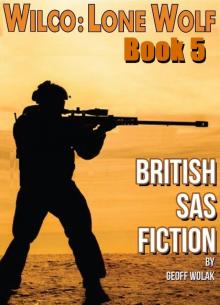 Wilco- Lone Wolf 5
Wilco- Lone Wolf 5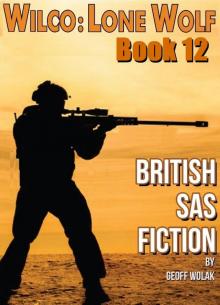 Wilco- Lone Wolf 12
Wilco- Lone Wolf 12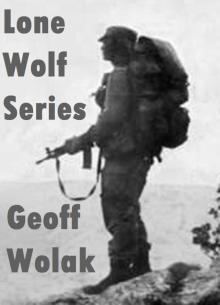 Wilco- Lone Wolf 10
Wilco- Lone Wolf 10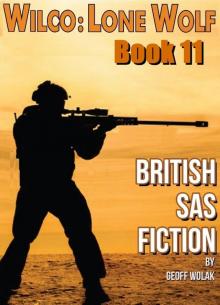 Wilco- Lone Wolf 11
Wilco- Lone Wolf 11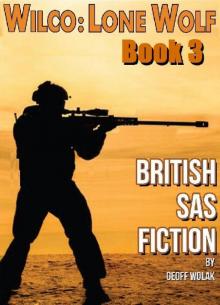 Wilco- Lone Wolf - Book 3
Wilco- Lone Wolf - Book 3 Magestic 3
Magestic 3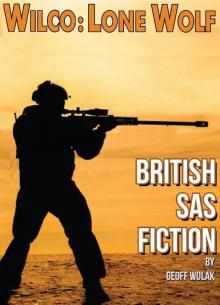 Wilco- Lone Wolf 19
Wilco- Lone Wolf 19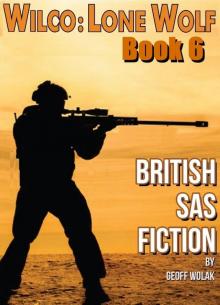 Wilco- Lone Wolf 6
Wilco- Lone Wolf 6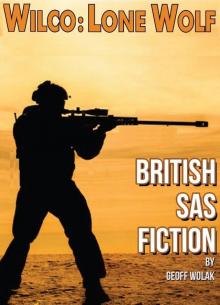 Wilco- Lone Wolf 16
Wilco- Lone Wolf 16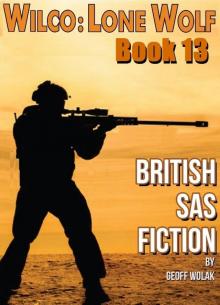 Wilco- Lone Wolf 13
Wilco- Lone Wolf 13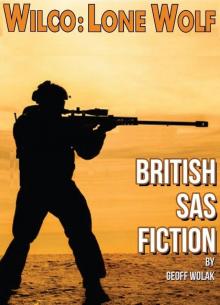 Wilco- Lone Wolf 18
Wilco- Lone Wolf 18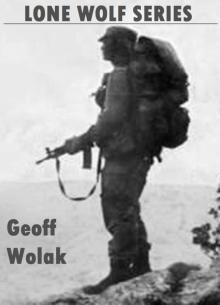 Wilco- Lone Wolf 9
Wilco- Lone Wolf 9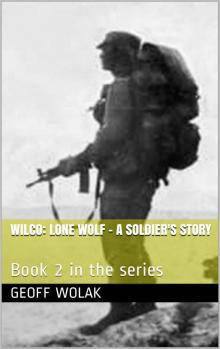 Wilco: Lone Wolf - Book 2: Book 2 in the series (Book 2 of 10)
Wilco: Lone Wolf - Book 2: Book 2 in the series (Book 2 of 10)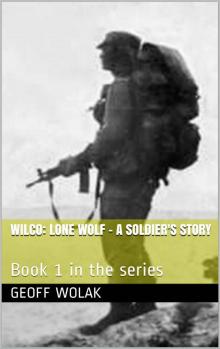 Wilco: Lone Wolf - book 1: Book 1 in the series (Part of an ongoing series)
Wilco: Lone Wolf - book 1: Book 1 in the series (Part of an ongoing series)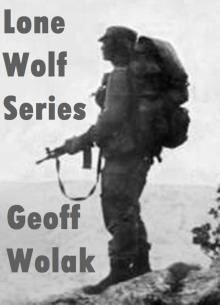 Wilco: Lone Wolf, Book 10: Book 10 in the series
Wilco: Lone Wolf, Book 10: Book 10 in the series